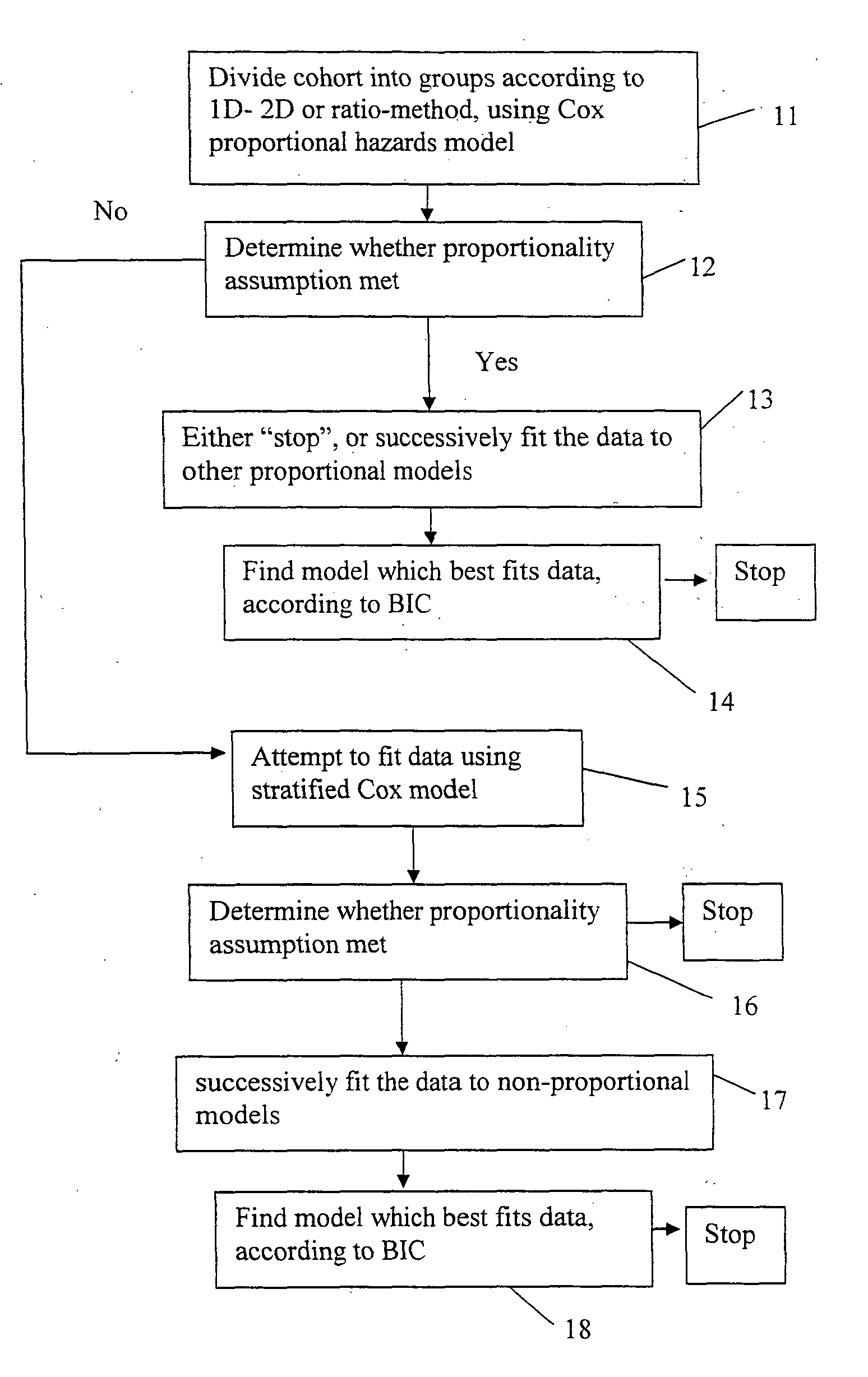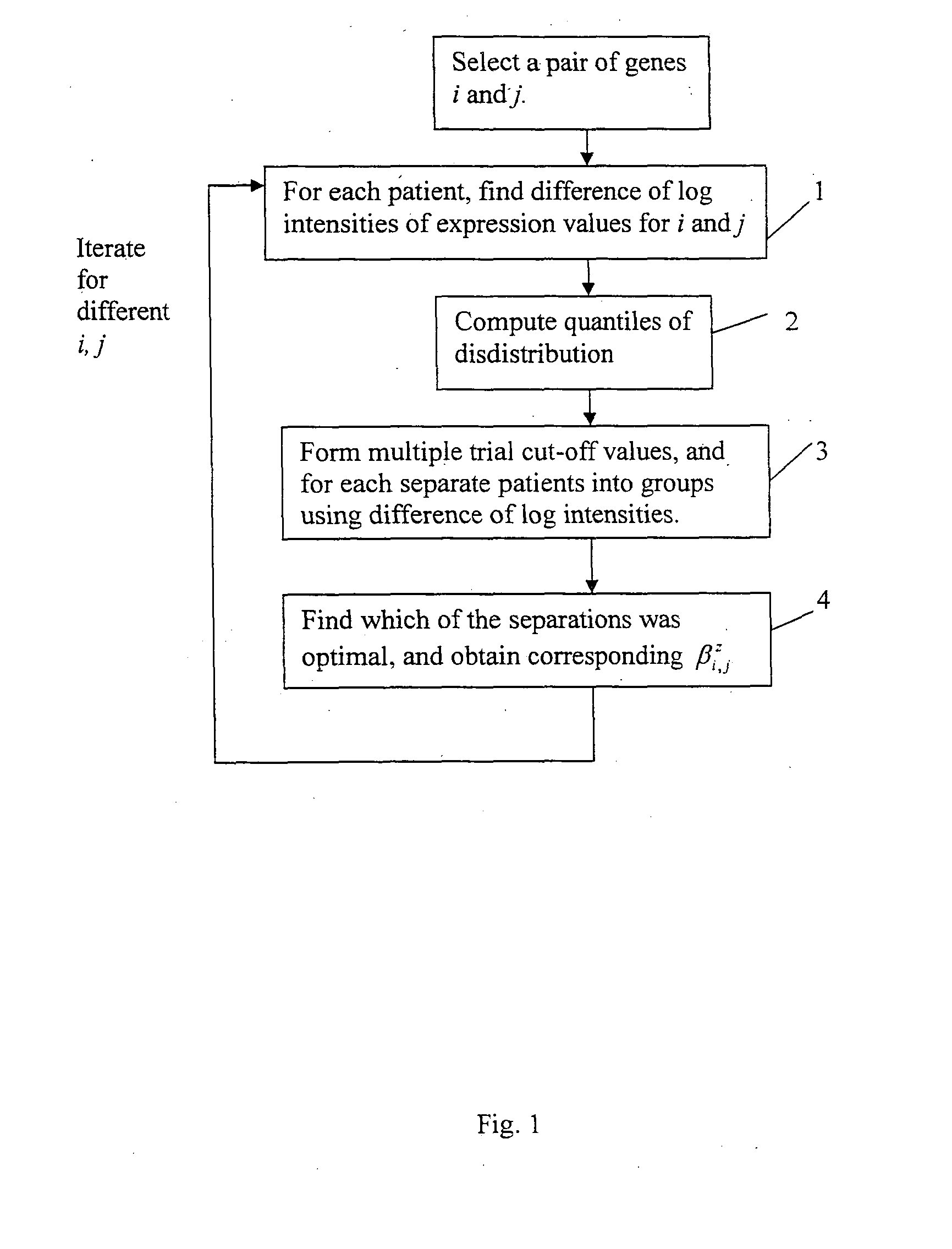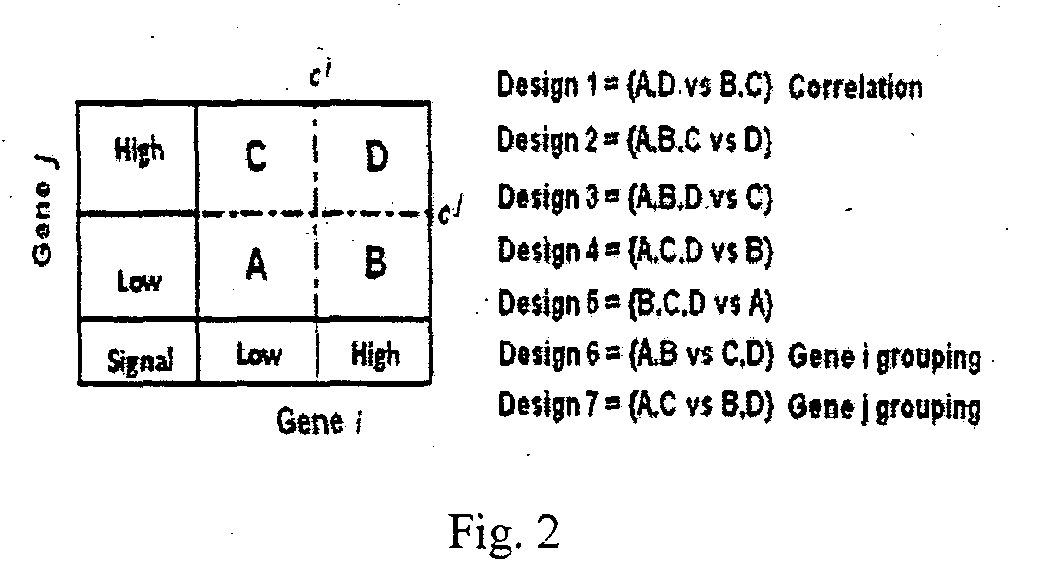Method for identification, prediction and prognosis of cancer aggressiveness
a cancer aggressiveness and prognosis technology, applied in the field of cancer aggressiveness identification, prediction and prognosis, can solve the problems of not being able to optimally predict the dynamics of cancer aggressiveness or poor prognosis, the survival model cannot be transformed from one into another by revaluing any of the parameters, and the noise of the throughput technology is still very high, so as to achieve cost reduction
- Summary
- Abstract
- Description
- Claims
- Application Information
AI Technical Summary
Benefits of technology
Problems solved by technology
Method used
Image
Examples
second embodiment
6. the Invention
[0162]To solve the problem with respect to model misspecification, a second embodiment of the invention uses the 4 different parametric survival models in the top lines of Table 1, along with any one of the 1 D-, 2D- and ratio-methods. Note that these 4 models assume proportional hazards. Parametric survival models are constructed by choosing a specific probability distribution for the survival function. The choice of survival distribution expresses some particular information about the relation of time and any exogenous variables to survival. It is natural to choose a statistical distribution which has non-negative support since survival times are non-negative.
[0163]Here we describe the second embodiment in detail with reference to FIG. 3:[0164]1. First we partition the patients of a cohort into groups using any one of the 1 D-, 2D- or ratio-methods (step 11 of FIG. 3), and obtain the corresponding Cox proportional hazards model. We estimate the p-value of the β coe...
PUM
 Login to View More
Login to View More Abstract
Description
Claims
Application Information
 Login to View More
Login to View More - R&D
- Intellectual Property
- Life Sciences
- Materials
- Tech Scout
- Unparalleled Data Quality
- Higher Quality Content
- 60% Fewer Hallucinations
Browse by: Latest US Patents, China's latest patents, Technical Efficacy Thesaurus, Application Domain, Technology Topic, Popular Technical Reports.
© 2025 PatSnap. All rights reserved.Legal|Privacy policy|Modern Slavery Act Transparency Statement|Sitemap|About US| Contact US: help@patsnap.com



